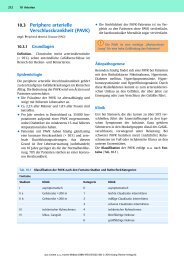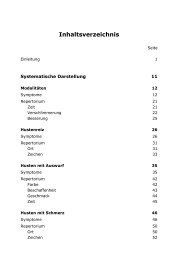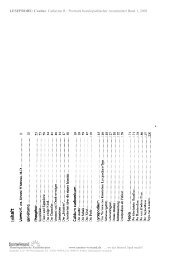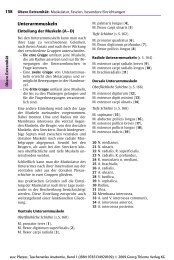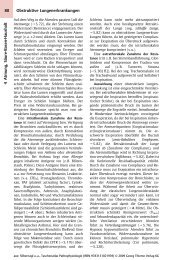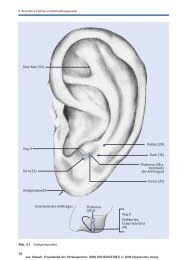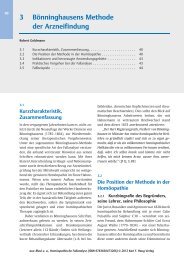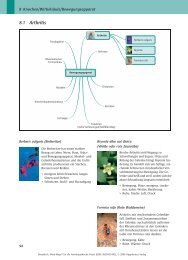alphabetical index of plant families and groups - Sunrise Versand
alphabetical index of plant families and groups - Sunrise Versand
alphabetical index of plant families and groups - Sunrise Versand
You also want an ePaper? Increase the reach of your titles
YUMPU automatically turns print PDFs into web optimized ePapers that Google loves.
developing the idea that ‘living was dangerous to your health.’ Physicians in the<br />
Beard school <strong>of</strong> thought associated neurasthenia with the stresses <strong>of</strong> urbanisation<br />
<strong>and</strong> the pressures placed on the intellectual class by the increasingly<br />
competitive business environment. Typically, it was associated with upper class<br />
individuals in sedentary employment.<br />
The modern view holds that the main problem with the neurasthenia diagnosis<br />
was that it attempted to group together a wide variety <strong>of</strong> cases. In recent<br />
years, Richard M. Fogoros has posited that perhaps ‘neurasthenia’ was a word<br />
that included some psychiatric <strong>and</strong> psychological conditions, but more importantly<br />
many physiological conditions that are marginally understood by the<br />
medical community, such as fibromyalgia, chronic fatigue syndrome <strong>and</strong> irritable<br />
bowel syndrome. [Extracted from Wikipedia]<br />
Today this syndrome, by whatever name it goes, is accepted as a psycho-pathological<br />
phenomenon. When first used by Beard in 1869, the pioneer who elucidated<br />
the physiological component to physical medical problems, Sigmund<br />
Freud, was only 13 years old. Underst<strong>and</strong>ing the interactions <strong>of</strong> mind <strong>and</strong> body<br />
were decades in the future.<br />
The homeopathic materia medica is chock-full with the term neurasthenia. It<br />
wouldn’t make much sense to connect it with any <strong>plant</strong> family or remedy group<br />
in particular. On the other h<strong>and</strong>, so little is known about the Araliaceae as a group<br />
that some broad generalisations will help get a preliminary idea. First <strong>of</strong> all,<br />
Ginseng features in the rubric, ‘Neurasthenia after debilitating diseases’, while<br />
Hedera helix has a key symptom <strong>of</strong> the condition, ‘Constantly lives in a state <strong>of</strong><br />
anxiety <strong>and</strong> worry.’ Secondly, on the authority <strong>of</strong> Louis Berman [1928], we note<br />
the ‘relations <strong>of</strong> neurasthenia to the gl<strong>and</strong>s <strong>of</strong> internal secretion in general <strong>and</strong><br />
to adrenal insufficiency in particular.’ Thirdly, the symptoms elicited in the<br />
proving <strong>of</strong> American ginseng [Panax quinquefolius] were characterised by ‘a<br />
condition <strong>of</strong> anxiety which is constantly present in all sexual hypochondriacs<br />
. . . [making Panax] a curative remedy in such cases <strong>of</strong> sexual weakness that<br />
especially react upon the mind, causing lassitude, <strong>and</strong> uneasy mental condition<br />
even to fears <strong>of</strong> approaching impotence.’ [see below]<br />
Breaking Down from Too Great Dem<strong>and</strong>s<br />
Berman clarifies by saying: ‘The neurasthenic is to be recognised by the fact that<br />
the most painstaking objective examination <strong>of</strong> his organs reveals nothing the<br />
matter with them. Yet, according to his complaint, everything is the matter with<br />
him. He cannot sleep when he lies down, he cannot keep awake when he st<strong>and</strong>s<br />
up. He cannot concentrate, but still he is pitifully worried about his life. The<br />
slightest irritant causes him to go <strong>of</strong>f the h<strong>and</strong>le.<br />
‘As he works himself up into his hysterical state as a reaction to a disagreeable<br />
person or problem, irregular blotches may appear on his face <strong>and</strong> neck. Generally,<br />
his h<strong>and</strong>s <strong>and</strong> feet are clammy <strong>and</strong> perspiring, his face is abnormally flushed<br />
or pallid, the eyes are worried or starey, unwonted w<strong>and</strong>ering sensations involving<br />
now this area <strong>of</strong> the body or now that obsess him. As the blood pressure is<br />
too low for the age, the circulation is nearly always inadequate <strong>and</strong> palpitation<br />
<strong>of</strong> the heart is a frequent complaint. So frequent that attention is <strong>of</strong>ten centred<br />
© Saltire Books Ltd<br />
488 Family ARALIACEAE



